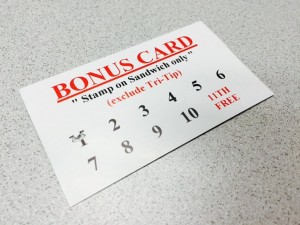When it comes to gender politics, never take the title of the piece at face value; or the conclusions for that matter.
In my last post, I mentioned how I find some phrases and topics act as red flags regarding the quality of research one is liable to encounter. Today, the topic is gender equality – specifically some perceived (and, indeed, some rather peculiar) discrimination against women – which is an area not renowned for its clear-thinking or reasonable conclusions. As usual, the news articles circulating this piece of research made some outlandish claim that lacks even remote face validity. In this case, the research in question concludes that people, collectively, try to figure out the gender of the people selling things on eBay so as to pay women substantially less than men for similar goods. Those who found such a conclusion agreeable to their personal biases spread it to others across social media as yet another example of how the world is an evil, unfair place. So here I am again, taking a couple recreational shots at some nonsense story of sexism.
Just two more of these posts and I get a free smoothie
The piece question today is an article from Kricheli-Katz & Regev (2016) that examined data from about 1.1 million eBay auctions. The stated goals of the authors involve examining gender inequality in online product markets, so at least we can be sure they’re going into this without an agenda. Kricheli-Katz & Regev (2016) open their piece by talking about how gender inequality is a big problem, launching their discussion almost immediately with a rehashing of that misleading 20% pay gap statistic that’s been floating around forever. As that claim has been dissected so many times at this point, there’s not much more to say about it other than (a) when controlling for important factors, it drops to single digits and (b) when you see it, it’s time to buckle in for what will surely be an unpleasant ideological experience. Thankfully, the paper does not disappoint in that regard, promptly suggesting that women are discriminated against in online markets like eBay.
So let’s start by considering what the authors did, and what they found. First, Kricheli-Katz & Regev (2016) present us with their analysis of eBay data. They restricted their research to auctions only, where sellers will post an item and any subsequent interaction occurs between bidders alone, rather than between bidders and sellers. On average, they found that the women had about 10 fewer months of experience than men, though the accounts of both sexes had existed for over nine years of age, and women also had very-slightly better reputations, as measured by customer feedback. Women also tended to set slightly higher initial prices than men for their auctions, controlling for the product being sold. As such, women also tended to receive slightly fewer bids on their items, and ultimately less money per sale when they ended.
However, when the interaction between sex and product type (new or used) was examined, the headline-grabbing result appeared: while women netted a mere 3% less on average for used products than men, they netted a more-impressive 20% less for new products (where, naturally, one expects products to be the same). Kricheli-Katz & Regev (2016) claim that the discrepancy in the new-product case are due to beliefs about gender. Whatever these unspecified beliefs are, they cause people to pay women about 20% less for the same item. Taking that idea on face value for a moment, why does that gap all but evaporate in the used category of sales? The authors attribute that lack of a real difference to an increased trust people have in women’s descriptions of the condition of their products. So men trust women more when it comes to used goods, but pay them less for new ones when trust is less relevant. Both these conclusions, as far as I can see from the paper, have been pulled directly out of thin air. There is literally no evidence presented to support them: no data; not citations; no anything.
I might have found the source of their interpretations
By this point, anyone familiar with how eBay works is likely a bit confused. After all, the sex of the seller is at no point readily apparent in almost any listings. Without that crucial piece of information, people would have a very difficult time discriminating on the basis of it. Never fear, though; Kricheli-Katz & Regev (2016) report the results of a second study where they pulled 100 random sellers from their sample and asked about 400 participants to try and determine the sex of sellers in question. Each participant offered their guesses about five profiles, for a total of 2000 attempts. About 55% of the time, participants got the sex right, 9% of the time they got it wrong, and the remaining 36% of the time, they said they didn’t know (which, since they don’t know, also means they got it wrong). In short, people couldn’t determine the sex reliably about half the time. The authors do mention that the guesses got better as participants viewed more items that the seller had posted, however.
So here’s the story they’re trying to sell: When people log onto eBay, they seek out a product they’re looking to buy. When they find a seller listing the product, they examine the seller’s username, the listing in question, and their other listings in their store to attempt and discern the sex of the seller. Buyers subsequently lower their willingness to pay for an item by quite a bit if they see it is being sold by a woman, but only if it’s new. In fact, since women made 20% less, the actual reduction in willingness to pay must be larger than that, as sex can only be determined about half of the time reliably when people are trying. Buyers do all this despite even trusting female sellers more. Also, I do want to emphasis the word they, as this would need to be a pretty collective action. If it wasn’t a fairly universal response among buyers, the prices of female-sold items would eventually even out with the male price, as those who discriminated less against women would be drawn towards the cheaper prices and bump them back up.
Not only do I not buy this story – not even a little – but I wouldn’t pay the authors less for it because they happen to be women if I was looking to make a purchase. While people might be able to determine the sex of the seller on eBay sometimes, when they’re specifically asked to do so, that does not mean people engage in this sort of behavior naturally.
Finally, Kricheli-Katz & Regev (2016) report the results of a third study, asking 100 participants how much they value a $100 gift card being sold by either an Alison or a Brad. Sure enough, people were willing to pay Alison less for the card: she got a mere $83 to Brad’s $87; a 5% difference. I’d say someone should call the presses, but it looks like they already did, judging from the coverage this piece has received. Now this looks like discrimination – because it is – but I don’t think it’s based on sex per se. I say that because, earlier in the paper, Kricheli-Katz & Regev (2016) also report that women as buyers on eBay, tended to pay about 3% more than men for comparable goods. To the extent that the $4 difference in valuation is meaningful here, there are two things to say about it. First, it may well represent the fact that women aren’t as willing to negotiate prices in their favor. Indeed, while women were 23% of the sellers on eBay, they only represented 16% of the auctions with a negotiation component. If that’s the case, people are likely willing to pay less to women because they perceive (correctly) some population differences in their ability to get a good deal. I suspect if you gave them individuating information about the seller’s abilities, sex would stop mattering even 5%. Second, that slight, 5% difference would by no means account for the 20% gap the authors report finding with respect to new product sales; not even close. 
But maybe your next big idea will work out better…
Instead, my guess is that in spite of the authors’ use of the word “equally qualified” when referring to the men and women in their seller sample, there were some important differences in listings the buyers noticed; the type of differences that you can’t account for when you’re looking at over a million of them and rough control measures aren’t effective. Kricheli-Katz & Regev (2016) never seemed to consider – and I mean really consider – the possibility that something about these listings, something they didn’t control for, might have been driving sale price differences. While they do control for factors like the seller’s reputation, experience, number of pictures, year of the sale, and some of the sentiments expressed by words in the listing (how positive or negative it is), there’s more to making a good listing than that. A more likely story is that differences in sale prices reflect different behaviors on the part of male and female sellers (as we already know others differences exist in the sample), as the alternative story attempting to be championed would require a level of obsession with gender-based discrimination in the population so wide and deep that we wouldn’t need to research it; it would be plainly obvious to everyone already.
Then again, perhaps it’s time I make my way over to eBay to pick up a new tinfoil hat.
References: Kricheli-Katz, T. & Regev, T. (2016). How many cents on the dollar? Women and men in product markets. Science Advances, 2, DOI: 10.1126/sciadv.1500599


